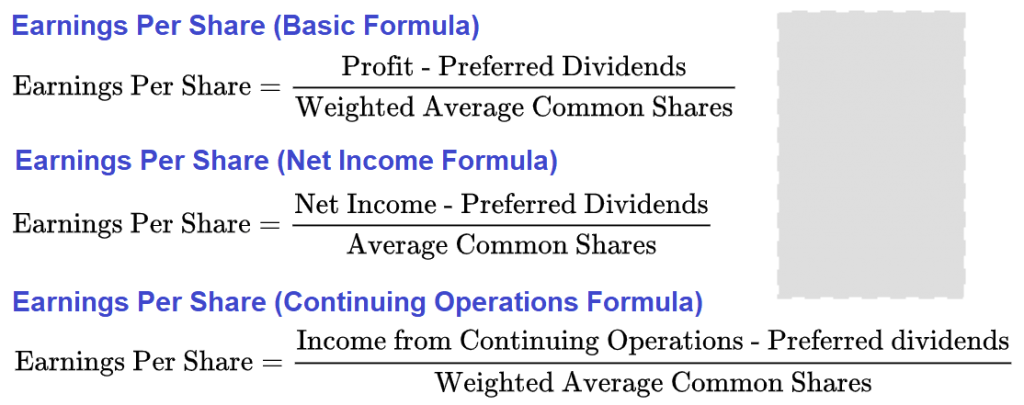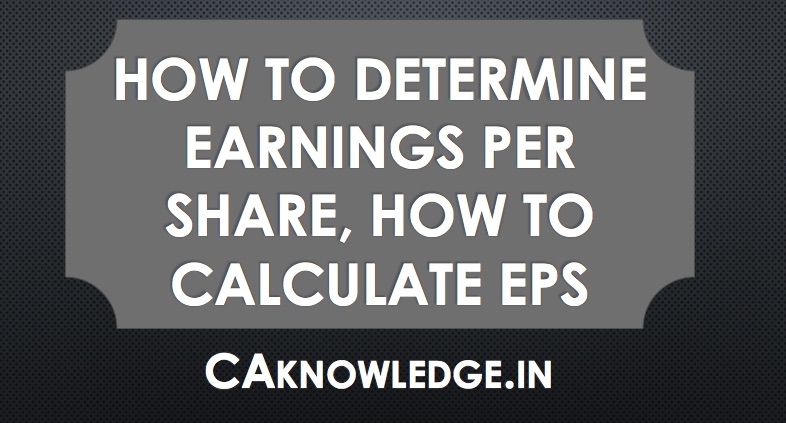How to Determine Earnings Per Share, How to Calculate EPS 2024: This article basically talks about the Earnings Per Share concept with the formulas and ways to calculate the same in different situations. Check the Earnings Per Share Formula and Meaning of Earnings Per Share. The Earnings per share is a term that tells about the earnings of the shareholder which is very important aspect for any company. So in this article I would explain in detail the concept of Earnings Per Share. Now you can scroll down below n check more details regarding How to Determine Earnings Per Share
Calculation of Earnings Per Share:
Earnings Per Share is calculated by dividing the Net Profit or loss of the Period attributable to the equity shareholders of the entity by the weighted average number of equity shares outstanding during the period.
Earnings Per Share = Net Profit Attributable to Eq. Sharehold/Weighted Average No of Shares
Now we will take a example and understand the concept of the formula.
| Date | Particulars | Purchase | Sell | Balance |
| 01-01-16 | Beginning of year | 1,000 | – | 1,000 |
| 31-05-16 | Issue of Shares | 500 | – | 1,500 |
| 01-11-16 | Buy Back of Shares | – | 200 | 1,300 |
Here we calculate the Weighted Number of Shares.
Weighted Average Number of Shares can be computed in two ways:
- WANS = (1000*5/12) + (1500*5/12) + (1300*2/12)
- WANS = (1000*12/12) + (500*7/12) – (200*2/12)
Here is the list from which you have to take the number of days for the Weighted Average Number of Shares.
| List of Shares | Weight to be Considered |
| Equity shares issued in exchange of cash | Date of Cash Receivable |
| Equity shares issued as a result of conversion of debt instrument | Date of Conversion |
| Equity Shares issued in lieu of interest or principal amount on other financial instruments | Date when interest ceases to accrue |
| Equity shares issued in exchange for settlement of a liability of other enterprise | Date on which the settlement becomes effective |
| Equity shares issued as consideration for the acquisition of an asset other than cash | Date on which the acquisition is recognised |
| Equity shares issued for the rendering of the services to the enterprise | When the services are rendered. |

The first example we took was of the fully paid up shares. Now we will see that how the calculation will be made in case of partly paid up shares.
If there are 3000 shares of Rs 10 each (Face Value), Rs 5 paid up than the weighted average formula for such shares should be calculated as under:
WANS = 3000 * (5/10) * (Number of months from issue/Number of months)
In case of the bonus shares or a share split, equity shares are issued to the existing shareholders without any consideration, so the number of share increases but without the increase in the paid up amount. Here the number of share has to be added but not in the paid up capital of the company.
In case of the right issue, the price at which the issue is open is mostly less than the fair value of the share, therefore the right issue has also a bonus element included in it. In such case the price of the right issue to be taken is the fair value immediately prior to the right issue. This factor is also known as ex-right fair value per share.
Must Read –


is this article relevant for ipcc may 2016
Hi Prasad
Yes this is relevant for May 2016 Exams